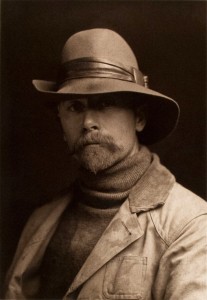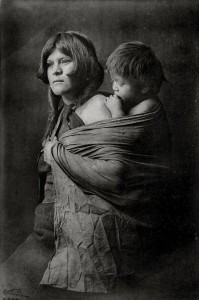I should, perhaps, mention that I was simultaneously reading historian Paul Johnson‘s new biography “Darwin,Portrait of a Genius.” Johnson is one of the greatest living historians and a master at biography. His biographies emphasize what should be an obvious point. This is that understanding the life of a man like Darwin, a scientist,or Curtis, an artist, is to understand their work not a series of events in their lives.
From Egan’s book I did learn a lot about Curtis that I did not previously know as well as about the difficulties that he faced, and also about the ferocious and evil prejudices that the native populations of North America faced in the late nineteen and early twentieth centuries. It is just that I would have liked to better understand the evolution of Curtis’ view of the American Indians and I would have liked Egan to take on the enormous complexity of the issue of native peoples in America. It is too easy to dismiss the terrible chain of events to self righteous prejudice, without a deeper exploration of the economics, religious, and even inevitable causes of cultural conflict.From a photographic perspective, this book is really disappointing. We are used by now to glorious reproductions of Curtis’ orotones. Houghton, Mifflin, Harcourt’s choice of paper doomed the images from the start and online reviews indicate that ebook readers found them even more pathetic. I should personally have like to learn more about the technical processes that Curtis used, particularly his gold toning.
I hate biographies that inevitably march with time and lead us down the path of the subject’s death. Whenever, I read such a tale, the words of Longfellow’s “Victor and the Vanquished” ring through my head:
“Wounded and weak, sword broken at the hilt,
With armor shattered, and without a shield,
I stand unmoved; do with me what thou wilt;
I can resist no more, but will not yield.
This is no tournament where cowards tilt;
The vanquished here is victor of the field. “
Egan, happily does not fall into this trap. His concluding chapter describes the ultimate triumph of Curtis’ opus and the resurrection of the noble races of North America.


